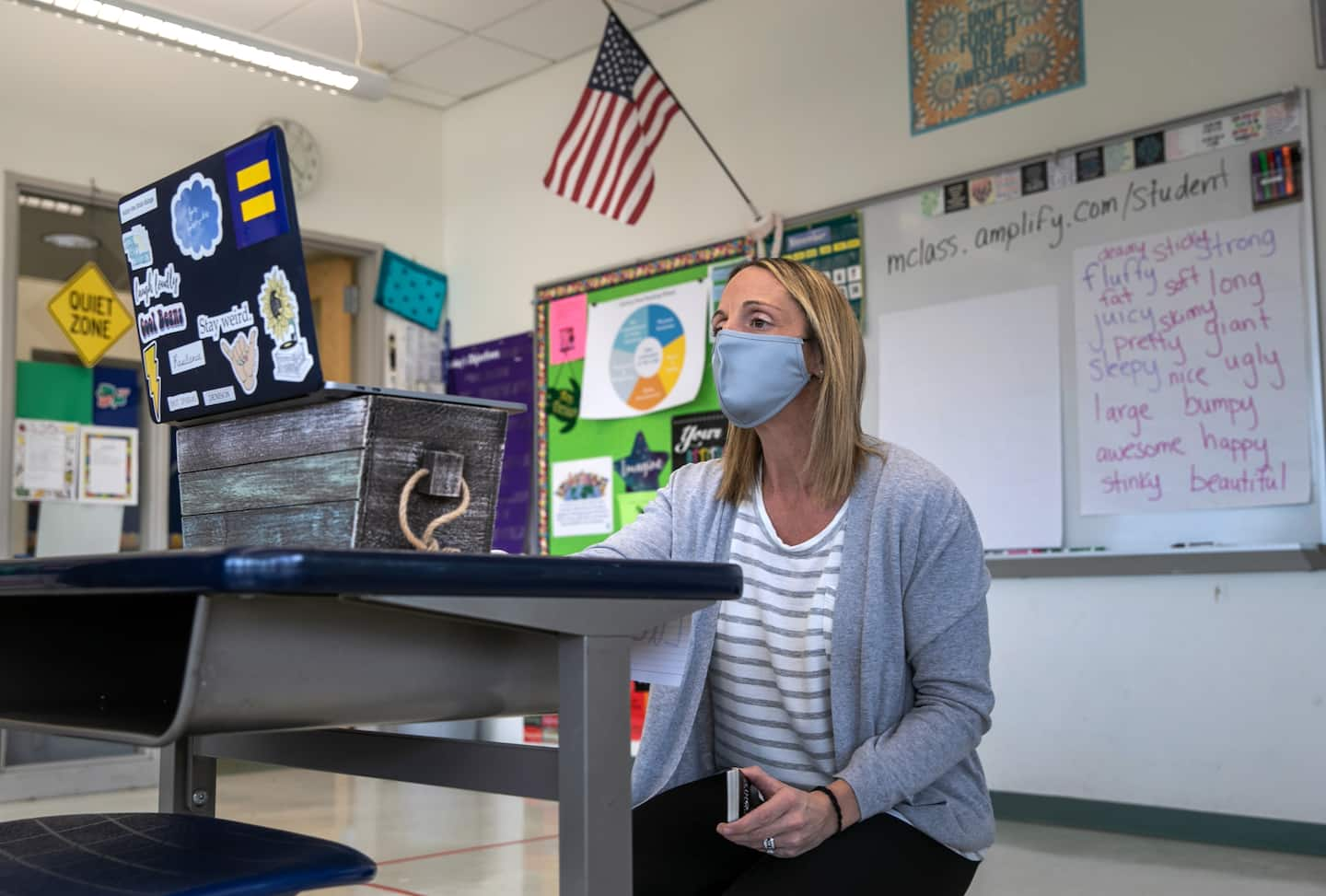Most schools should close and stay closed through winter

Those who say schools should remain open point out that bars and restaurants have led to far more documented infections than schools. They point out, rightly, that we as a society set the wrong priorities in the summer. If we had kept high-risk settings closed and followed mitigation measures such as universal mask-wearing, the infection rate could be low enough for schools to safely open.
That didn’t happen. As a result, about 1.5 percent of Americans are currently infected with coronavirus. In some areas, in a room of 20 people, there is a nearly 1-in-4 chance that someone has covid-19. The high rates of community spread impact children as well; the American Academy of Pediatrics reported on Tuesday that nearly 1.2 million children have been diagnosed with covid-19, constituting nearly 12 percent of total infections. During the last week for which data are available, the week ending Nov. 19, there were more than 144,000 new cases of covid-19 in children, by far the highest weekly increase since the pandemic began.
Imagine you’re a teacher who works in a poorly ventilated classroom for multiple hours a day. It’s challenging to keep physical distancing, and there’s a high likelihood that one of your students has the coronavirus and could transmit it to you. Being told that school transmission isn’t the main driver of community spread is hardly reassuring when you’re the one shouldering the individual risk. One in 4 teachers are older or have chronic health conditions that predispose them to serious illness if they contract covid-19. Others might have household members for whom exposure is more likely to result in hospitalization or death.
It’s important to note that many proponents of keeping schools open cite studies that show low risk of transmission when effective mitigation methods are put in place. Some well-resourced schools have implemented measures including decreased classroom capacity, improved ventilation and strictly enforced mask-wearing. Some have even moved entire classes outdoors. With all these measures, students, teachers and staff have a much-reduced risk of acquiring covid-19. But most schools lack the resources to implement such changes.
Why haven’t there been more cases in schools if many schools haven’t implemented all those safety measures? A few things are possible. Maybe there have been more infections than we know about. Children with covid-19 tend to be asymptomatic or mildly symptomatic. Testing is limited, and it’s hard for parents to find testing sites for younger children. Parents wishing to keep their kids in school might not want to know the result; some mothers are reportedly forming pacts to not test their kids.
Reporting is also an issue, with many states reporting cases only if they are proven to have occurred in school. That kind of epidemiological link depends on robust contact tracing, which is not occurring in many places because of overwhelmed public health systems. (North Dakota, for example, has given up contact tracing.) There is no national dashboard; compilations of school outbreaks are self-reported.
Without a national mandate for regular testing and trusted reporting, we simply won’t have evidence that there isn’t greater transmission in schools. As the aphorism goes, absence of evidence is not evidence of absence.
With vaccines on the horizon, fall 2021 could well herald a normal school year. For now, and at least through the winter, schools should be closed except to those who absolutely need in-person instruction: children with special needs and the most vulnerable, for whom home learning is not possible. Some schools should continue to care for children of essential workers; staff there should receive hazard pay. Other schools that want to open should meet strict criteria to ensure that they have invested necessary resources and implemented critical mitigation measures. Instead of schools closing only when there are proven outbreaks, schools must prove they’re safe before they can open.
As a physician, mother, daughter of a schoolteacher and former city health commissioner who oversaw schools, I know that in-person schooling is crucial for children’s cognitive and emotional development. But loss of learning isn’t the same as loss of life, and we cannot put the burden of society’s failures on the people who work in schools. If we truly want to prioritize children, we need to drive down community infection rates and invest in safety upgrades in schools — not jeopardize the lives of teachers, staff and their families.
Watch Opinions videos:
Read more:






